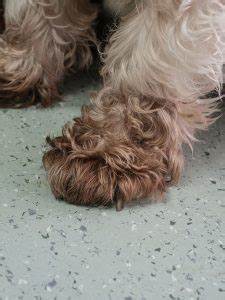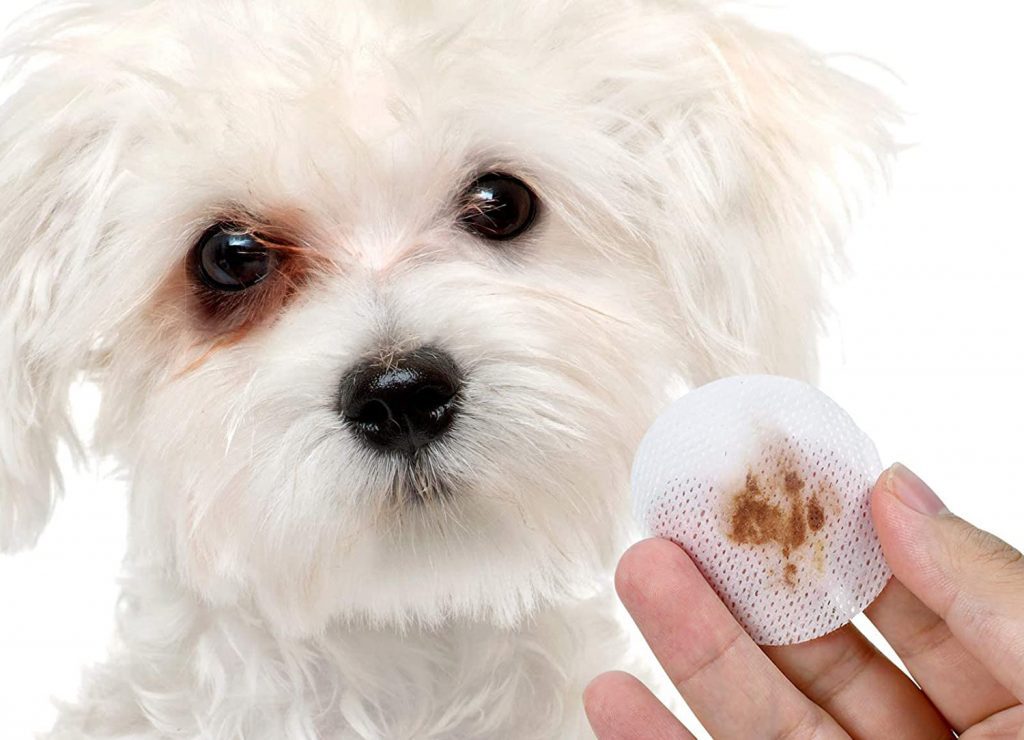Why Do Dogs Get Brown Feet and Tear Stains?
If you’ve noticed reddish-brown staining on your dog’s paws or beneath their eyes, you’re not alone—and you’re definitely not the only pet parent wondering what’s going on.

These stains are common, especially in lighter-coloured dogs, but they can be a sign that something deeper is going on with your dog’s health, diet, or environment.
Let’s break it down:
What causes these stains, what they mean, and how you can help your dog naturally.
What Causes Brown Stains?
The brown or rust-coloured patches on your dog’s paws or under their eyes are most often caused by porphyrins. Porphyrins are natural compounds that contain iron and are excreted through your dog’s tears, saliva, and urine. When they sit on the fur for too long—especially in areas exposed to air and light—they oxidise and stain the coat.
So if your dog licks their feet a lot or has weepy eyes, you’ll likely see those reddish-brown stains forming over time.
Tear Stains: Why Do They Happen?
Tear staining under the eyes is especially common in:
- Breeds with shallow eye sockets (like Maltese, Shih Tzu, Bichon, Poodle)
- Dogs with allergies or eye irritation
- Dogs with partially blocked tear ducts
Other possible contributors include:
- High iron levels in drinking water
- Plastic food or water bowls that harbour bacteria
- Imbalanced gut flora
- Low-quality or high-carb diets
Brown Feet: Why Are Dogs Licking So Much?
When you see staining on your dog’s feet, it’s usually a result of excessive licking, and that licking can stem from several underlying issues:
- Allergies (food or environmental)
- Yeast or bacterial infections
- Injury or pain
- Anxiety or boredom
- Imbalanced gut health
In most cases, the brown colour is saliva staining—but it’s also a warning sign that your dog is trying to soothe something uncomfortable.
What Can You Do About It?
Here are natural and effective ways to tackle staining and support your dog’s overall health:
🧼 1. Clean and Dry the Area
Keeping your dog’s skin and coat clean and dry is key:
- Gently wipe under the eyes daily with warm water or natural pet-safe eye wipes
- Dry paws thoroughly after walks or outdoor play
- Use diluted apple cider vinegar (50/50 with water) as a natural anti-fungal paw soak
🥩 2. Feed a Low-Starch, Natural Diet
Diet plays a huge role in your dog’s skin, coat, and immune health.
- Avoid kibble loaded with grains, rice, potato, corn, peas, or synthetic additives
- Choose a species-appropriate raw food diet—rich in meat, low in carbs, with no fillers
- Ensure your dog has access to filtered water (high iron in tap water can contribute to staining)
🌿 3. Support the Gut
A healthy gut means a healthy dog—and less yeast and inflammation.
- Add a high-quality probiotic to balance gut bacteria
- Consider digestive enzymes to support absorption and reduce inflammatory responses
- Use supplements with natural anti-inflammatory ingredients like turmeric, coconut oil, or kelp
🐾 4. Rule Out Medical Issues
If the staining is severe, or you notice:
- Ongoing watery eyes
- Redness or irritation
- Constant licking or chewing
- Bad odour or swelling
… then it’s time for a check-up. Your vet can rule out blocked tear ducts, infections, allergies, or even dental problems contributing to the staining.
Bonus Tip:
Switch to stainless steel or ceramic bowls.
Plastic bowls can harbour bacteria and worsen facial irritation—especially in dogs with sensitive skin.
Final Thoughts
While those brown stains can be annoying (and yes, they can smell too), they’re also your dog’s way of showing you something’s off balance.
Luckily, with the right food, natural support, and a little daily care, you can tackle the root causes and help your dog feel (and look) their best.
Need help choosing the right food, treats, or supplements?
Pop in and see us at The Cats & Dogs Dinner Company – Kapiti, or browse online at catsanddogs.co.nz
We’re here to help you feed your pets naturally—from the inside out.

